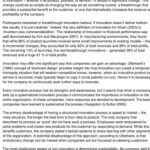Regenerative agriculture, a set of farming practices that sequester carbon in soil, is gaining traction as a potential climate solution. But how does it stack up against other strategies for mitigating climate change? This article delves into the science behind regenerative agriculture, comparing its potential and challenges to other climate mitigation approaches.
Regenerative Agriculture: A Primer
Regenerative agriculture aims to reverse the historical loss of soil carbon caused by conventional farming practices. Its core principles include minimizing soil disturbance, maximizing continuous vegetation cover, diversifying crops, and integrating livestock. These practices mimic natural ecosystems, enhancing soil health and its capacity to store carbon.
.jpg)
Debating the Effectiveness of Regenerative Agriculture
While the potential of regenerative agriculture is promising, its role in climate mitigation has been debated. Some argue that its carbon sequestration capacity is overstated and that focusing on it could divert resources from other crucial solutions. Conversely, proponents highlight extensive research demonstrating the efficacy of regenerative practices in increasing soil carbon stocks.
Regenerative Agriculture vs. Other Climate Solutions: A Comparative Analysis
Let’s compare regenerative agriculture to other common climate mitigation strategies:
Carbon Sequestration Potential:
- Regenerative Agriculture: Studies suggest a potential to sequester 1.5 GtCO2 per year globally, potentially removing 100-200 GtCO2 by the end of the century. This includes practices like cover cropping, no-till farming, and improved grazing management.
- Afforestation/Reforestation: Planting trees is a proven method for carbon removal, but faces challenges related to land availability and potential competition with food production.
- Bioenergy with Carbon Capture and Storage (BECCS): BECCS involves growing biomass for energy, capturing the CO2 released during combustion, and storing it underground. Scalability and land use concerns are key challenges.
- Direct Air Capture (DAC): DAC technologies directly remove CO2 from the atmosphere. While promising, they are currently energy-intensive and expensive.
Co-Benefits:
Regenerative agriculture stands out for its numerous co-benefits beyond carbon sequestration:
- Improved Soil Health: Increased organic matter enhances soil fertility, water retention, and resilience to drought and erosion.
- Enhanced Biodiversity: Diverse cropping systems and habitat restoration support pollinator populations and beneficial insects.
- Increased Food Security: Healthier soils can lead to higher and more stable crop yields.
- Water Quality Improvements: Reduced fertilizer use and runoff minimize nutrient pollution in waterways.
Challenges and Considerations:
- Scalability: Transitioning millions of farms to regenerative practices requires significant investment in education, technical assistance, and financial incentives.
- Measurement and Verification: Accurately quantifying soil carbon sequestration can be complex, requiring robust monitoring protocols.
- Nitrogen Management: Building soil carbon often requires increased nitrogen, raising concerns about potential fertilizer use and associated emissions. However, regenerative practices can also improve nitrogen cycling and reduce losses.
A Holistic Approach to Climate Mitigation
Addressing climate change demands a multifaceted approach. While regenerative agriculture offers significant potential for carbon removal and numerous co-benefits, it’s not a silver bullet. Integrating it with other strategies like renewable energy deployment, energy efficiency improvements, and dietary shifts is crucial for achieving comprehensive climate mitigation. Policy support, research advancements, and farmer engagement are essential to unlock the full potential of regenerative agriculture as a key component of a climate-resilient future.


